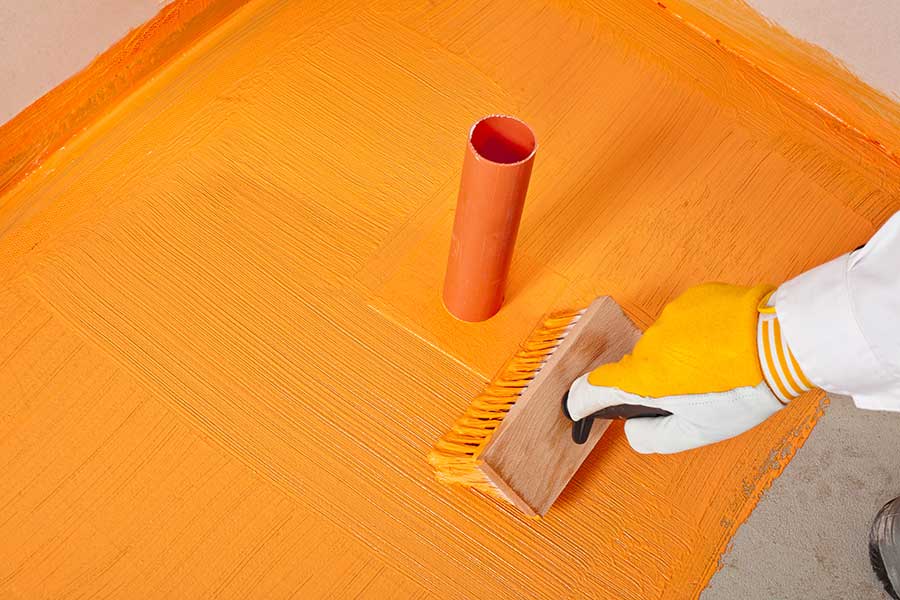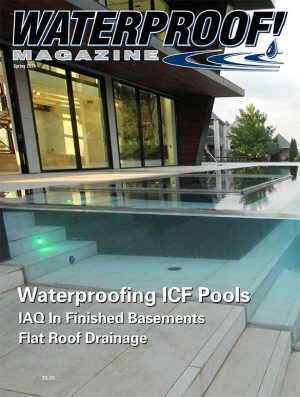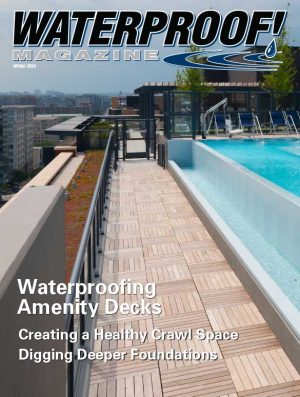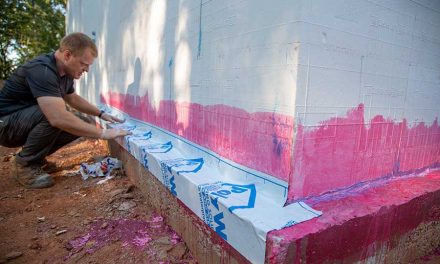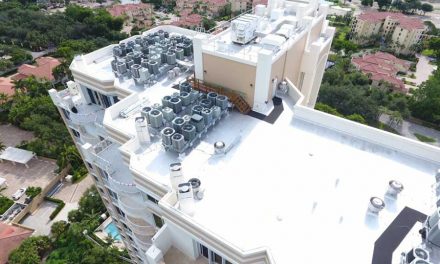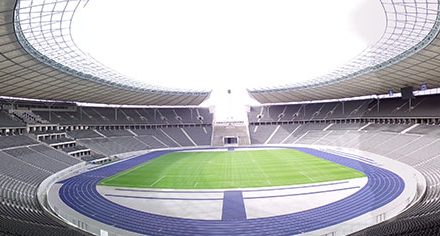By Mike Christy
Photo courtesy of Trinseo
From extending application longevity to supporting sustainable building practices, latex binders are critical for moisture management within the building and construction industry. These polymers are found in various applications, including waterproof membranes, roof coatings, and waterproof barrier coatings.
Today, latex binders continue to deliver exceptional performance to help extend the lifespan of structures while supporting the industry as it turns toward more sustainable and efficient solutions. Latex polymer manufacturers can design the right polymer to balance desirable performance properties with the demand for sustainably advantaged materials, such as optimizing for ease of use or maintaining a lower hazard classification.
Through tailored polymer design and product development, researchers can support the building and construction industry’s ever-changing needs.
Driving High-Performance, Long-Lasting Solutions
When sourcing construction materials, building owners and contractors need water management solutions they can rely on to enhance their structures’ efficiency, durability, and lifespan. With the right polymer choice, latex binders can be expected to perform for many years without the need for maintenance or repair. Moreover, latex binders have excellent formulation latitude to deliver specific performance qualities and potentially reduce material usage and drying time — making for a faster waterproofing process.
Traditionally, latex polymers used for water barriers are comprised of styrene butadiene (SB) polymers as this chemistry is known for its reliability when used for water resistance, adhesion, and durability. With this in mind, latex binder manufacturers work side-by-side with customers to develop the appropriate polymers for use in SB-based water barriers to further enhance the performance of their applications.
By adjusting monomer composition, particle size, type of neutralization, solids, pH levels, viscosity, and more, SB binders can be designed to deliver specific properties, such as quicker drying times. Creating a latex polymer with faster drying properties enables installers to apply waterproofing membranes more quickly, in turn potentially reducing labor costs as the job can be completed in a shorter time frame.
Typical waterproof membranes are installed on floor and wall substrates, then tile is installed as the finishing layer over a thin-set mortar or mastic. By using the right latex binder within the water barrier coatings, the tile application can minimize water penetration into the subfloor and ensure that tile applications remain strong under highly variable moisture conditions. Additionally, a correctly designed binder can also make water barriers, particularly roof coatings, more resistant to extreme weather conditions.
In addition to providing a flexible design, the right latex binder chemistry can help enhance your waterproofing application. Pure acrylic or styrene acrylic binders deliver exceptional ultraviolet and light stability and durability when formulated for use in outdoor applications. The continuous film, as a result of the formulated liquid roof coating, helps protect roof decks from rain and snow, reducing overall maintenance as it makes for a longer-lasting application. Furthermore, the ability to adjust the elasticity and flexibility of latex binders is especially important for interior wet areas like bathroom or kitchen tile applications or extreme climate locations as it can enhance crack bridging capabilities and cut down on maintenance needs or failures.
Latex binders can also support installers looking for better adhesion to various building materials — making polymers versatile for waterproofing applications. The right design of a latex binder can be created based on the specific building materials in use. Installers can choose a binder that will create a strong bond to the necessary substrate, as binders use chemical bonding and mechanical adhesion to strengthen the connection between the barrier coating and building material.
Choosing the right binder for your water management solution will not only enhance the application’s overall performance but can help improve efficiency and cut down on repair costs.
Supporting Sustainable Building Practices
The building and construction industry is seeing a growing demand to improve sustainable practices. In fact, a United Nations Environment Programme report found that the built environment sector — defined as all activities encompassing the making of environments for human occupants or activities — is one of the largest contributors to climate change, accounting for 37% of global energy-related carbon emissions. 1 However, industry players will need to balance the demand for sustainably advantaged solutions with performance requirements to create durable, long-lasting applications that meet industry standards. The design of latex binders plays an important, but often overlooked, role in improving the environmental impact of the building and construction industry while also providing high-quality water management applications. Known for their consistent performance when used in water management applications, such as the ability to prevent leaks and moisture damage and reduce cracking, latex binders have long been used in waterproof barrier coatings, waterproofing membranes, and roof coatings.
In waterproofing applications for confined spaces, such as bathrooms, maintaining low VOC levels is imperative. Thankfully, today’s latex polymers can be designed to support water management applications that deliver low to zero volatile organic compounds (VOC) to improve the final application’s environmental impact. This is a distinct benefit compared to alternative chemistries, such as solvent-borne alkyds, which are known to generate high levels of VOC emissions. Using latex polymers can help maintain low VOCs and are a more sustainable choice for waterproofing.
Latex binders can also be advanced using bio-based materials and a mass balance approach to help improve sustainability. Using mass balance, manufacturers can integrate bio-attributed feedstocks with fossil-based feedstocks to accurately track the allocation of sustainably advantaged materials while validating the sustainability claims of the final product. By integrating bio-based sources, we can reduce our reliance on virgin feedstocks while formulating polymers to deliver critical performance properties.
Alternatively, latex binder manufacturers can incorporate recycled content into some polymer dispersions to enhance the sustainability of the solution within water management applications. Using chemical recycling technologies such as depolymerization, manufacturers can create a high-quality recycled monomer for use in latex binders. Latex polymers containing recycled content not only reduce the industry’s reliance on virgin feedstocks, they can also be designed to deliver much-needed performance characteristics such as controlled moisture vapor transmission, leak prevention, and easy application.
When it comes to water management needs, latex binders will continue to be an integral part of the application. Installers, contractors, and other building and construction industry players can rely on tailored latex binders to enhance needed performance qualities and support them on their sustainability journey. No matter the approach, latex binders can transform the environmental impact of water management applications.
1United Nations Environment Programme, & Yale Center for Ecosystems + Architecture (2023). Building Materials and the Climate: Constructing a New Future. https://wedocs.unep.org/20.500.11822/43293.

Mike Christy
Mike Christy, has over fourteen years of experience in the CASE industry. In his current role at Trinseo, Mike helps customers develop latex polymers to meet their application needs. Trinseo’s extensive portfolio of competitive, high-performance solutions are designed to prolong functional lifetime and attain long-term durability.
Fall 2024 Back Issue
Price range: $4.95 through $5.95
Cool Roofs Can Revolutionize Your Customer’s Facilities to Beat the Heat
Enhancing Moisture Management with Latex Binders
Benefits of Opting for a Liquid-Applied Roof Coating Over a Complete Tear-off
PVC Membrane Solutions For Aquatic Facility Decks
Crystalline Waterproofing: The Science Behind It & Why It’s Important
Case Study: Terra-Lok Triumph
Description
Description
Cool Roofs Can Revolutionize Your Customer’s Facilities to Beat the Heat
By Kyle Ziebarth
As temperatures are reaching unseasonable highs in many areas of the country, more industrial and commercial building owners are trying to rein in out-of-control cooling costs.
Enhancing Moisture Management with Latex Binders
By Mike Christy
Latex binders are polymers that are found in various applications, including waterproof membranes, roof coatings, and waterproof barrier coatings.
Benefits of Opting for a Liquid-Applied Roof Coating Over a Complete Tear-off
By Edward Klonowski
Many commercial roofing manufacturers offer warranties on the lifespan of commercial roofs. But if your roof is damaged and not under warranty, you have options that may be more cost-effective and waste-avoidant.
PVC Membrane Solutions For Aquatic Facility Decks
By Matthew Sands
Decks around swimming pools and splash pads are often plagued with cracks, chips, broken tile, peeling paint, flaking, and delamination. A cost-effective solution is to cover the existing deck or flooring with reinforced PVC deck membrane.
Crystalline Waterproofing: The Science Behind It & Why It’s Important
By Cassandra Brown
Traditional waterproofing methods rely on a barrier system that prevents water from penetrating the surface. Crystalline waterproofing creates a permanent and self-sealing barrier within the concrete.
Case Study: Terra-Lok Triumph
King Mesa Gin in Lamesa, Texas, faced significant water intrusion in the basement’s “press pit,” threatening the safety of its personnel and the integrity of its equipment and products.
Additional Info
Additional information
| Weight | N/A |
|---|---|
| Magazine Format | Digital Download Magazine, Print Mailed Magazine |

